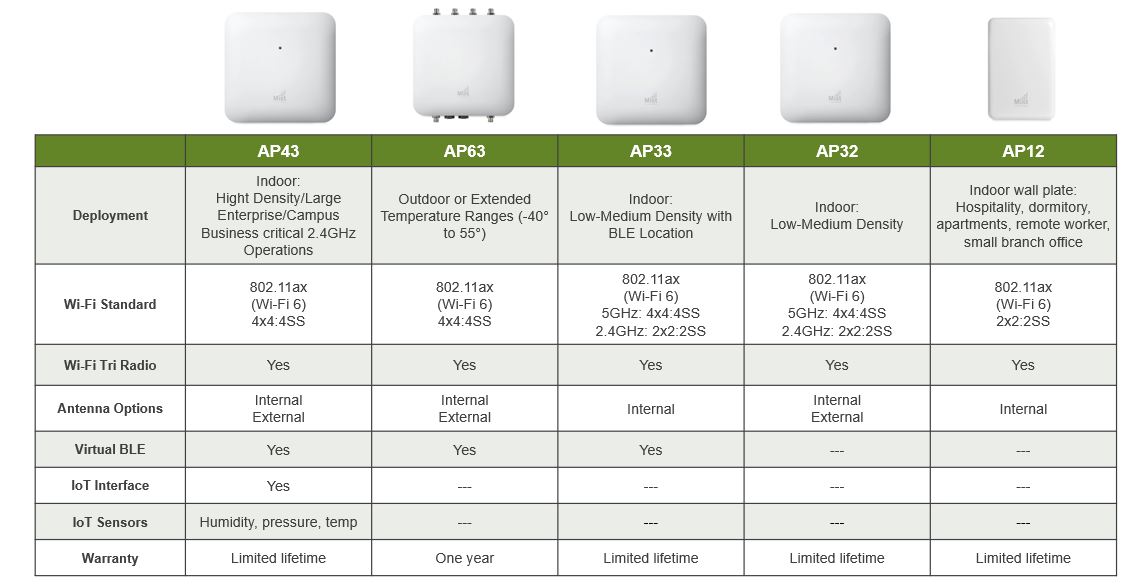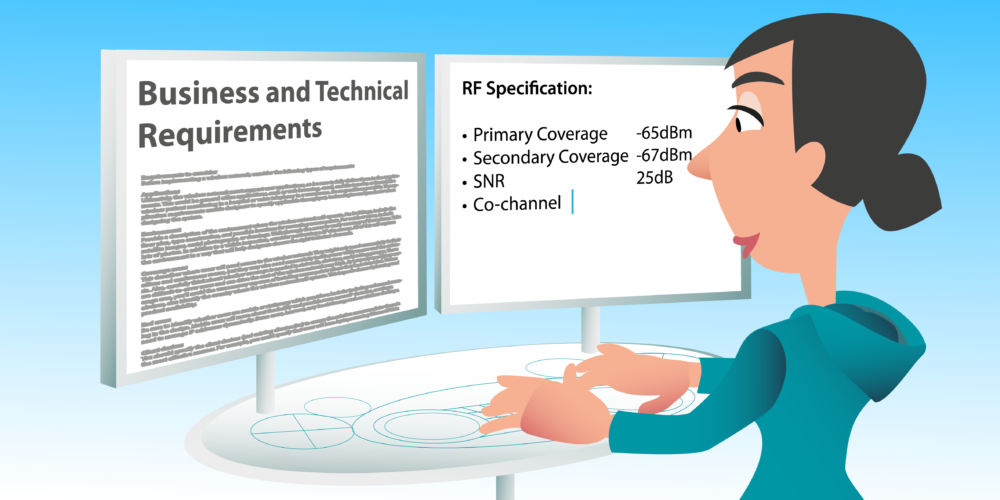
Hello and welcome to this video where I will be discussing how we choose the correct Mist AI access point for Wireless’s LAN Designs. So let’s start off by looking at the different Wi-Fi 6 access point models from Juniper Mist. Let’s start by talking about the flagship Mist AI access point. The AP43. Now as with all Mist APs, the AP43 is Tri Radio, two radios for wireless LAN operations and one radio for [inaudible 00:00:46] monitoring. Both operational radios are 4×4, supporting four spatial streams and the default configuration for the AP43 is to have one radio operating in 2.4GHz band and radio two operating in the 5GHz band. However, the AP43 can also be configured for dual 5GHz operation making the AP43 the ideal choice for high density deployments.
Now the AP43 also includes a BLE radio, including the Mist 16 element BLE Array for location-based services. And unique to the AP43 is a built-in IoT sensor providing humidity, pressure and temperature data. The AP43 comes with either built-in omnidirectional antennas, or connections for external antennas. Now, if we are designing for low to medium density deployments where the majority of traffic will stay on the 5GHz band, then probably the AP33 and 32 are the perfect choice. Now both of these APs have the same 4×4 5GHz radio as the AP43, but they have a lower SPAC 2.4GHz radio, which is a 2×2 radio. The AP33 includes a BLE radio for location-based services but if location-based services is not required, then the AP42 would be the preferred choice, which has options for using the internal omni antennas or we can use external antenna connections.
Now, the main factor for deciding between the AP33 and the AP32 is do you need BLE location-based services? If the answer is yes, the AP33, otherwise the AP32 would be the AP of choice. Next, we have the AP12, which is the wall plate AP. Radios inside the AP12 are 2×2 supporting two spatial streams and anywhere you have an ethernet wall plate, you can replace it with this AP so ideally, this is going to be used in hospitality and dormitory-type environments. So for example, hotel rooms, you can replace the ethernet wall plate in the bedrooms with this AP and this provides a great solution for getting access points out of corridors and into the bedrooms where the users are and which in turn will improve user experience. And then finally, if you need to install an AP outdoors, or in environments where you have extended temperature ranges such as walk-in freezers, we have the AP63, which can operate between minus 40 degrees celsius all the way up to 55 degrees celsius. And the AP63 comes with both internal antennas and a version with external antenna connections.
Okay, so how would you choose a correct AP for your design? Well, some simple rules. If you’re doing a high density design, which may require dual 5GHz for extra capacity, so example environments would be large enterprises, university campuses, then the AP43 would be the ideal choice. Additionally, if any critical business operations are to be carried out on the 2.4GHz band, such as supporting 2.4GHz-only devices in a warehouse or a hospital, then again, the AP43 would be the model to go with, with the highest SPAC 2.4GHz radio. But for low to medium density designs, which require BLE location, the AP33 would be the correct choice. And for low to medium density deployments which don’t require BLE location, then we would suggest the AP32. If installing in hotel rooms, apartments or dormitories, then the AP12 provides the ideal solution in these type of environments. And then finally, for outdoor or extended temperature ranges, we have the AP63.
Thank you for watching this video, and goodbye for now.
Mist AI WiFi 6 Access Points
The graphic below is a summary of the different Mist AI access points with their ideal deployment environments. For more information on Mist AI access points please click here

Next Videos









